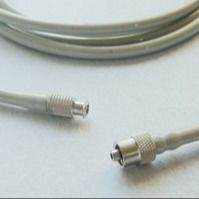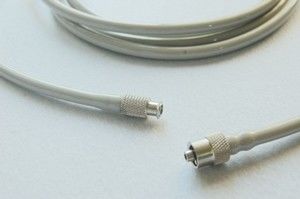OEM Part Number Cross References:
Compatibility:
| Manufacturer |
Model |
| Criticare |
1100, 2200, 5070/P, 507E/P/R, 507N/P, 507S/SD
|
| Fukuda Denshi |
Dynascope DS-7100, Dynascope DS-7200
|
| Goldway |
Vet 420A
|
| Mindray > Datascope |
Passport, Passport D, Passport EL, Passport XL
|
| Omron > Colin |
400 Series, Press Mate Advantage, Press-Mate (Old Models), Press-Mate 8800
|
| Welch Allyn |
Atlas, Atlas 6200 Series
|
The process flow for manufacturing is as follows:
Wire cutting: The wires are cut to the required lengths.
Sheath Stripping: The outer sheath of the wires is stripped to expose the inner conductors.
Shield Twisting: If there is a shield layer, it is twisted around the inner conductors for added protection against interference.
Sleeve Crimping: The sleeves or connectors are crimped onto the ends of the wires to facilitate proper connections.
Tin Soldering: The exposed conductors are coated with tin solder to enhance conductivity and ensure secure connections.
End Pressing: The crimped sleeves or connectors are securely pressed onto the ends of the wires.
Set Plastic Shell: A plastic shell or housing is set around the assembled components for structural integrity and protection.
Electrical Test: The assembled components are tested for proper electrical functionality to ensure they meet the required specifications.
Internal Mold Forming: If needed, an internal mold is formed to provide additional support and structure to the assembled components.
Outer Mold Forming: An outer mold is formed around the internal components to provide further protection and aesthetic appeal.
Visual Inspection: The assembled product is visually inspected to check for any defects or abnormalities.
Electrical Test: Another round of electrical testing is conducted to ensure the product's electrical performance.
Thread End of Network: If applicable, the network thread end is prepared for connection.
Sheath Stripping: The outer sheath of the network thread end is stripped to expose the inner conductors.
Shield Twisting: The shield layer is twisted around the inner conductors for added protection.
Tin Soldering: The exposed conductors are coated with tin solder for secure connections.
Chips Welding: Chips or electronic components are welded onto the network thread end.
Glue Dispensing: Adhesive or glue is dispensed to secure components and provide stability.
Assembly: The various components are assembled together according to the product design.
Final Test: The fully assembled product undergoes a final round of testing to ensure it meets all specifications and standards.
Packaging: The finished product is packaged and prepared for shipping or distribution.

 Your message must be between 20-3,000 characters!
Your message must be between 20-3,000 characters! Please check your E-mail!
Please check your E-mail!  Your message must be between 20-3,000 characters!
Your message must be between 20-3,000 characters! Please check your E-mail!
Please check your E-mail! 


